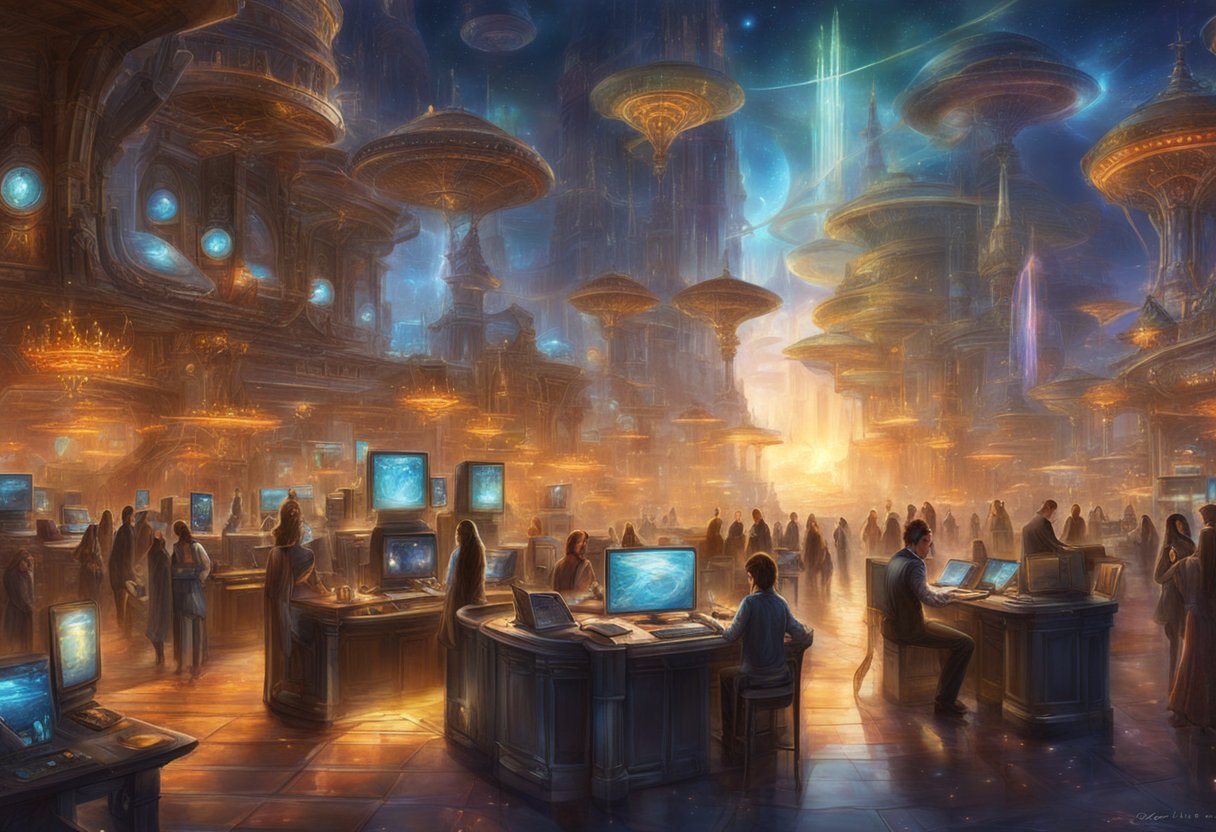The digital afterlife industry is taking off. More companies now offer ways to keep our online selves alive after we die. These services let people save messages, stories, and even digital versions of themselves for loved ones.

The digital afterlife business is growing fast, though exact numbers are hard to pin down. Some guess it could be worth around $123 million. Companies like HereAfter let users record stories and messages while alive. After death, family and friends can access these memories.
This tech brings comfort to some, but it also raises questions. How will it change how we grieve? What about privacy? As the industry grows, these issues will become more important. It’s a new world where our digital selves can live on, even when we don’t.
Evolution of the Digital Afterlife Industry

The digital afterlife industry has grown rapidly in recent years. New technologies allow people to create virtual versions of themselves or loved ones after death.
Historical Background
Digital memorials first appeared in the late 1990s. These were simple websites to remember the deceased. In the 2000s, social media changed how we remember those who died. Facebook introduced memorial pages in 2009.
The 2010s saw the rise of digital estate planning. People started thinking about what would happen to their online accounts after death. Some companies offered services to manage digital legacies.
By the late 2010s, AI entered the scene. Chatbots that could mimic the dead became possible. This opened up new ways to interact with digital versions of the deceased.
Current Trends and Growth
Today, the digital afterlife industry is booming. Many companies now offer virtual reconstructions of the dead. These range from simple chatbots to complex AI personas.
Some popular services include:
- Digital avatar creation
- AI-powered chatbots of the deceased
- Virtual reality experiences with lost loved ones
- Digital memory banks
The market is growing fast. More people are interested in preserving their digital selves after death. This has led to increased investment in the field.
Technological Advancements
AI and machine learning are driving the industry forward. Generative AI can now create realistic digital personas. These can mimic a person’s speech patterns and personality.
Virtual and augmented reality are making interactions more lifelike. People can now “see” and “talk” to 3D versions of the deceased.
Data analysis tools help create more accurate digital copies. They can process large amounts of personal data to build detailed profiles.
Brain-computer interfaces are an emerging area. Some researchers hope to one day upload human consciousness to computers.
Implications and Ethics

The digital afterlife industry raises complex issues around privacy, mental health, and legal rights. New technologies create both opportunities and risks that society must grapple with.
Privacy and Data Security
Digital afterlife services collect vast amounts of personal data to recreate deceased individuals. This raises major privacy concerns about how that sensitive information is stored and used.
Companies need strong safeguards to prevent data breaches or misuse. There are also questions about who can access a person’s digital remains.
Should family members have control, or should the deceased person’s wishes be followed? Clear policies are needed to protect people’s privacy even after death.
Psychological Impact on Society
Interacting with digital versions of the dead could affect people’s mental health and grieving processes. Some may find comfort, while others could struggle to move on.
There are worries about psychological impacts, especially for vulnerable individuals. Digital afterlives might prolong grief or create unhealthy attachments.
Kids may have trouble understanding the concept of death if relatives remain “alive” online. Society will need to adapt to this new form of remembrance.
Legal Considerations
The digital afterlife industry operates in a legal gray area. New laws may be needed to govern ownership and use of digital remains.
Key questions include: Who has the right to a person’s data after death? Can digital versions make legal decisions or own property?
There are also concerns about consent. Should explicit permission be required to recreate someone digitally? Policymakers will need to address these complex legal issues.
